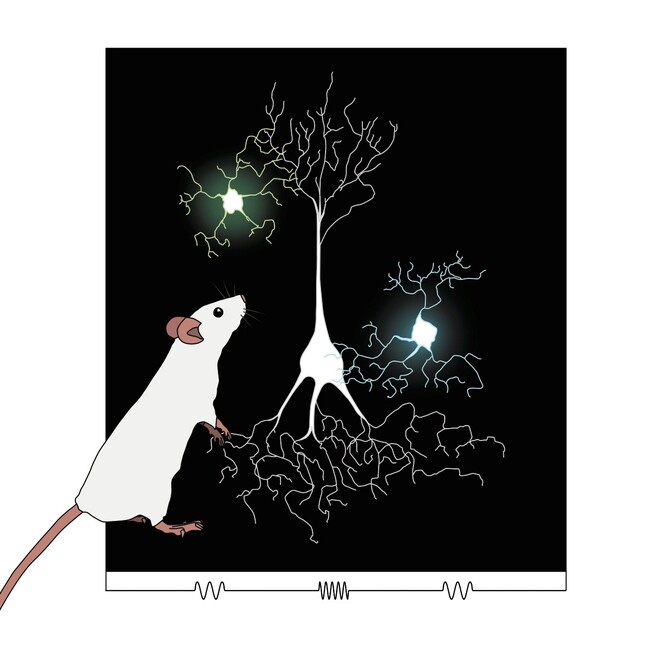Penn Medicine Researchers Discover Hidden Brain Pathways Crucial to Communication
Being able to understand speech is essential to our evolution as humans. Hearing lets us perceive the same word even when spoken at different speeds or pitches, and also gives us extra sensitivity to unexpected sounds. Now, new studies from the Perelman School of Medicine at the University of Pennsylvania clarify how these two crucial features of audition are managed by the brain.
In the first study, published online in eLife this week, Maria N. Geffen, PhD, an assistant professor in the departments of Neuroscience and Otorhinolaryngology and Head and Neck Surgery, and her team, including first co-authors Ryan G. Natan and John J. Briguglio, both doctoral candidates, discovered how different neurons work together in the brain to reduce responses to frequent sounds, and enhance responses to rare sounds.
When navigating through complex acoustic environments, we hear both important and unimportant sounds, and an essential task for our brain is to separate out the important sounds from unimportant ones.
“In everyday conversations, you want to be able to carry on a discussion, yet simultaneously perceive when someone else calls your name,” Geffen said. ”Similarly, a mouse running through the forest wants to be able to detect the sound of an owl approaching even though there are many other, more ordinary sounds around him.”
“It’s really important to understand the mechanisms underlying these basic auditory processes, given how much we depend on them in everyday life,” she added.
Researchers found that a perceptual phenomenon known as “stimulus-specific adaptation” in the brain might help with this complex task. This feature of perception occurs across all our senses. In the context of hearing, it is a reduction of auditory cortical neurons’ responses to the frequently-heard, “expected” sounds of any given environment. This desensitization to expected sounds creates a relatively heightened sensitivity to unexpected sounds—which is desirable because unexpected sounds often carry extra significance.
While this phenomenon has been studied for decades, there were limited tools available previously to examine the function of specific cell types in stimulus-specific adaptation. In the study, Geffen’s team used recently discovered optogenetics techniques—which enable a given type of neuron to be switched on or off at will with bursts of light delivered to a lab mouse’s brain through optical fibers.
The team found that, surprisingly, two major types of cortical neurons provided two separate mechanisms for this type of adaptation.








